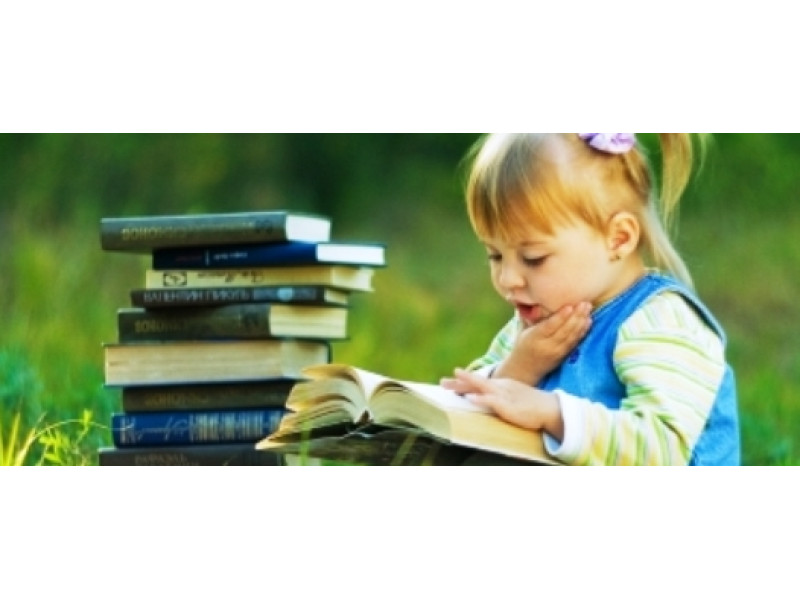In this selection for International Writer's Day, we will look at the 10 most famous children's books published in Ukraine in recent years.
Ukrainian children's literature has only recently begun to attract the attention of the world community. The world has seen the wide world in translations into foreign languages, appearing in international catalogs, such as "The White Ravens", in the honorable lists of the Hans Christian Andersen literary award. Thanks to the participation of publishers in the International Book Fair in Bologna and victories in prestigious awards, some children's books by Ukrainian writers have become wildly successful among foreign readers.
"Glove"
The famous folk tale "The Mitten", published by "Navchalna kniga - Bohdan", 2011, with illustrations by Romana Romanyshyn and Andriy Lesiv, took first place in our TOP.
In 2011, this book won the competition of the International Biennial of Illustration in Bratislava "VIB 2011". And already in the spring of 2012, "The Glove", designed by the Lviv creative studio "Agrafka", appeared in the already mentioned catalog "White Crows". Thus, the names of artists Romana Romanyshyn and Andriy Lesiv were forever engraved in the lists of artists who create the best children's books in the world.
“The Glove” is an experiment by “Agrafka” in the field of children’s books. This is a game book, an interactive toy, which was well appreciated by Munich librarians. Taking the classic and well-known text of a Ukrainian folk tale, the artists placed it in a real fur glove. All the characters became residents of separate “apartments” – someone ended up in the middle of the palm, someone in the finger, etc. Romana and Andriy added a coloring glove to the book, thus adapting the publication to the modern children’s worldview. After all, traditional illustrations to a famous fairy tale are no longer enough for young readers today.
The drawings in "The Glove" are somewhat schematic, which is typical of artists, the color scheme is restrained, the details and fonts are carefully worked out - all this creates a high-quality and modern children's book.
The publishing house also offered an English-language version of "The Mittens," performed by Oksana Lushchevska and Michael Naydan.
"The Tale of the Old Lion"
The second tier featured "The Tale of the Old Lion" by Maryana Savka, published in 2011 by the Lviv-based "Old Lion Publishing House".
This book was published by "White Crows" at the same time as "The Glove". Maryana Savka created a poetic legend about the Lion-storyteller, who lives "in a city called princely Lviv", drinks Galician coffee and writes fairy tales on a typewriter, hosting guests from exotic places - an elephant, a giraffe and a crocodile. The book itself was published as an attempt to mythologize the ancient "cultural capital" of Ukraine for children. By the way, the publishing house itself feeds on the same legend.
Thanks to the refrain, the tale is easy to remember, which only helps it spread among children. The book is given a special mood by the illustrations of the talented master Volodymyr Shtanka, who is known for his interpretation of Nikolai Gogol's "Evenings on a Farm Near Dikanka", which was included in the "Honorary List of Illustrators" of the international jury of the Hans Christian Andersen Literary Award.
"Eight Days in the Life of a Chipmunk"
Third on our list is Ivan Andrusiak with the book "Eight Days from the Life of a Chipmunk", illustrated by Hanna Osadko and published in 2012 by the Grani-T publishing house.
Also included in the "White Crows" in 2013, this mischievous story by Ivan Andrusyak with illustrations by Hanna Osadko immediately won many fans. "Eight Days from the Life of a Chipmunk" is a psychological story about seventh-grader Ivan Bodnaruk, which combines first love, problems with studying exact sciences, teenage complexes, and even an attempt to raise a "pocket" devil to fulfill his desires. The lively and witty language and stylish black-and-white illustrations create the impression that the reader is leafing through a real children's diary, like the famous "Diary of a Wimpy Kid" by Greg Geffley. Probably, it was this trendy design that impressed the Munich librarians who included "Eight Days from the Life of a Chipmunk" in the catalog.
The story was continued with a publication about the adventures of the almost adult Ivas - "The Chipmunk in Love", which was published in 2015.
"Turnip. An old fairy tale, retold in a new way by Ivan Franko"
Published in 2012 by the publishing house "Navchalna kniga - Bohdan", "Turnip. An old fairy tale, retold in a new way by Ivan Franko" also made it to "White Crows" and to the fourth place in our selection. This is not surprising, because the illustrations in this bestseller were also made by "Agrafka" - Romana Romanyshyn and Andriy Lesiv.
A fresh look at the ageless classic of Ukrainian folk art has once again taken the readers' breath away. The stylish, original and humorous design of the book-game "Turnips" is impressive: the book-"turnip" is taken out of the cardboard box-"earth". And the insert with a centimeter tape will help the child imagine the fantastic size of the vegetable that the whole family was unable to pull out. At the end of the fairy tale there is a dictionary of incomprehensible (archaic) vocabulary, because the authors used the retelling of Ivan Franko. And on the publisher's website you can find the English version of the book.
"A glove full of poems"
Fifth place goes to Vasyl Holoborodko with the book "A Glove Full of Poems", illustrated by Inga Levi and published in 2010 by the Grani-T publishing house.
The book consists of children's rhymes by Vasyl Holoborodko and is decorated with restrained and concise illustrations by Inga Levy. "A Glove Full of Poems" was also included in the catalog of The White Ravens in Munich.
For young Ukrainian readers, the book's illustrations are quite unusual: in contrast to bright animation, the artist focused on restrained and pastel drawings with colored pencils. However, this technique is best suited to free, metaphor-rich, verlibres and does not fill up the space for the reader's imagination. Light and airy illustrations somewhat resemble children's drawings, and the poems themselves - the logic of children's thinking and speech.
By the way, Oksana Zabuzhko considers this author to be deserving of the Nobel Prize in Literature and, of course, translations into many languages.
"Stars and Poppy Seeds"
With this book, Romana Romanyshyn and Andriy Lesiv made their debut as authors. In 2014, the Old Lion Publishing House gave the world the pleasure of contemplating not only the unsurpassed illustrations from the creative studio Agrafka, but also getting acquainted with the philosophy of "small steps" embodied in the text by the authors.
And although some literary critics accuse the little work of lacking "writing talent", this did not prevent the book from receiving the prestigious BolognaRagazzi Prize and becoming popular around the world. Thus, a slightly modified work was published in France, Korea, and Argentina. And the English-language version is available for purchase on Amazon.
The story of Romana and Andriy tells about a little girl, Dora, and how you shouldn't be afraid of difficult tasks, because they can be mastered gradually, starting with simple steps.
"Forest Song"
It is quite unexpected to find such a non-children's writer with a non-children's work on this list. Despite the fact that Lesya Ukrainka's work is included in the school curriculum, her highly artistic works are undoubtedly of no interest to children.
However, a modern edition with unusual illustrations by Polina Doroshenko works wonders: it changes the perception of Larisa Kosach's works and forces you to read at least one book.
The illustrations of the young and talented artist, which are atypical for Ukrainian classics, were duly appreciated by Munich librarians, who added the book published by Osnovy (2014) to the White Crows catalog of the same year.
"Who will make the snow?"
Another masterpiece of 2013 from "Old Lion Publishing House", which almost as expected made it to "White Crows", and also collected almost all possible awards in the field of children's literature: "BBC Children's Book of the Year", "LitAkcent of the Year".
The authors of this wonderful book are the couple Maryana and Taras Prokhasko. The story "Who Will Make the Snow" is about the life of a large family of moles, love, mutual assistance, eternal values, and openness to the world. The main idea of the work is a calm story about life as it is and as it should be in a loving family, wrapped in metaphorical, fragile, and touching illustrations by Maryana Prokhasko. It is nice that the mother in this family is not limited to the humiliating role of a housewife, but finds time and freedom to play the double bass, play with the little ones, learn foreign languages, and jump on a trampoline. Although this is not the main theme and idea of the story.
The publication has already attracted interest from Koreans, who have translated the work, and Latvians. Meanwhile, the Prochaskis have written the second part of the trilogy, entitled "Where the Sea Disappeared" (2014), and the third, "How to Understand a Goat" (2015).
"The War That Changed Rondo"
Romana Romanyshyn, Andriy Lesiv, "The War That Changed Rondo" ("Old Lion Publishing House", 2015)
Ukrainian authors were once again among those awarded the prize at the International Exhibition in Bologna in 2015. And again, this is the merit of the creative studio "Agrafka" and, perhaps, in part, the result of the fact that since the spring of 2014, the words "Ukraine" and "war" have increasingly begun to appear in the headlines of world news.
"The War That Changed Rondo" straddles the line between a metaphorical picture book for children and an illustrated parable for adults. The artists have taken on the difficult task of telling children about the war, and, apparently, following fresh traces.
The action takes place in the idealized town of Rondo, where everyone lives in harmony and takes care of the singing flowers. Before us are three allegorical friends - Danko, Zirka and Fabian. One day, a war comes to the city, which "touches everyone" (the artists depicted the war in the form of a huge faceless hand carrying a deadly weapon).
The finale is optimistic: love, joint work, and singing save the city (here we should obviously read a hint at the events of the Revolution of Dignity: the residents of Rondo sing a hymn). The main thing in the book is the understanding that wars do not pass without a trace (the city, like its residents, will carry wounds and memories throughout their lives).
Slovakia was the first country to acquire the rights to "The War That Changed Rondo," and the book will soon be published in South Korea, France, and China.













Write a comment